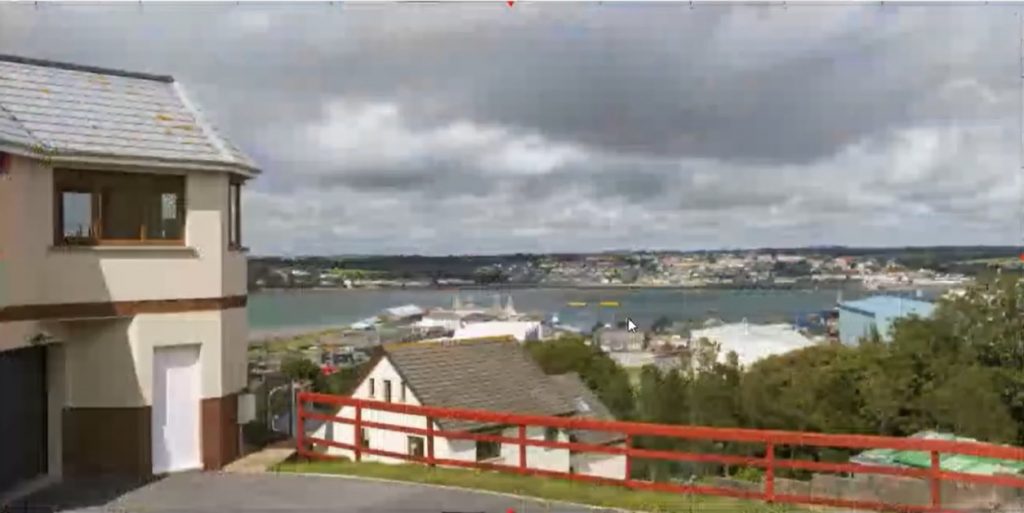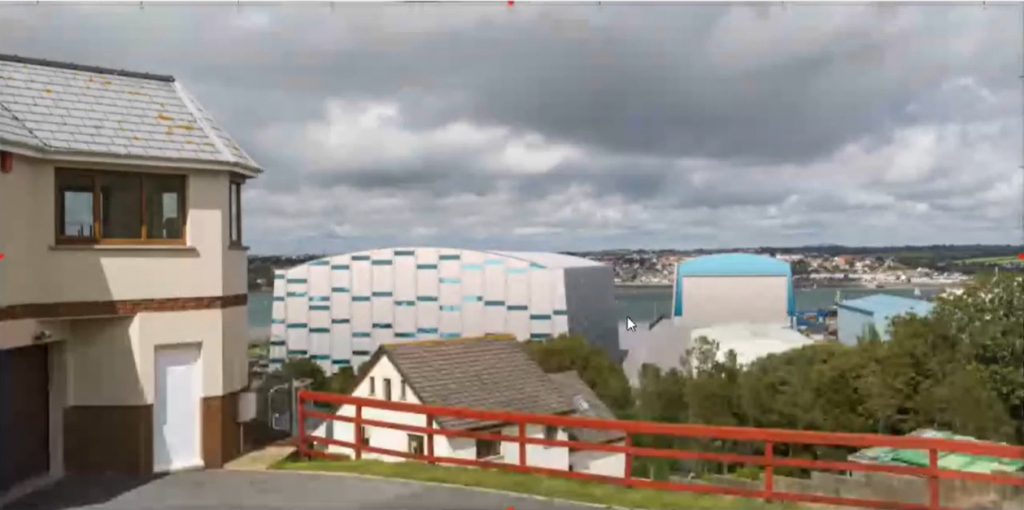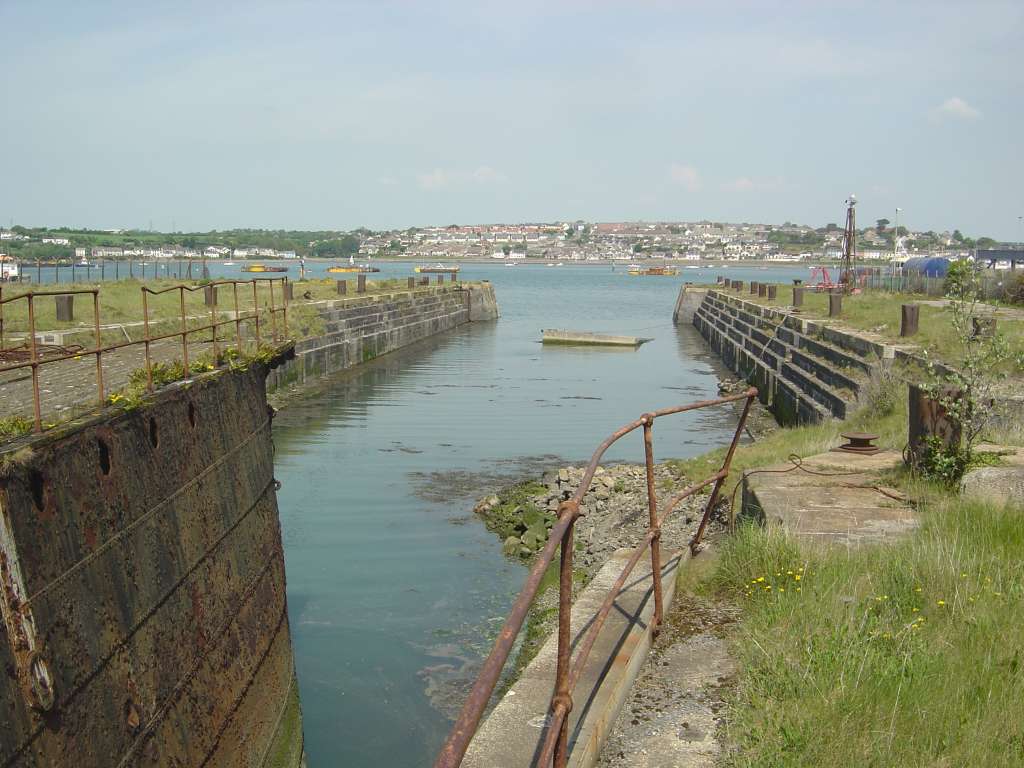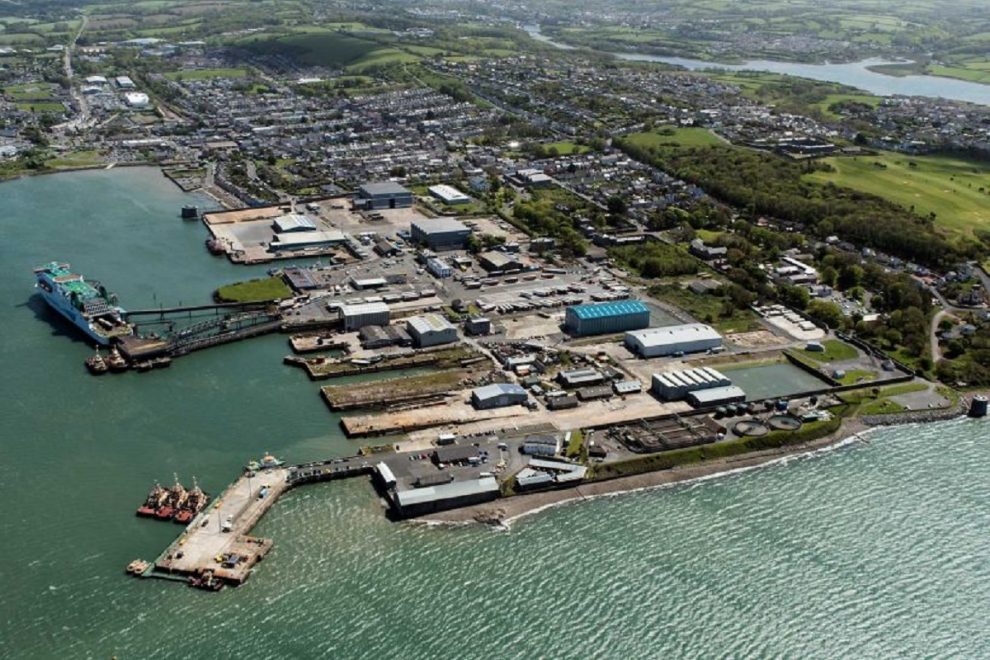PEMBROKESHIRE County Council’s Planning Committee decided to hold a site visit to see the location of a controversial development at Pembroke Dock’s Royal Dockyard.
The application, by Milford Haven Port Authority, is for the colossal redevelopment of the Dockyard as part of the Pembroke Dock Marine project, part-funded by the Swansea Bay City Deal.
Intervention by the Welsh Government meant that the Planning Committee could not approve the plan; only reject it or indicate whether it would support it if able to do so.
Despite being unable to defer a decision, other than rejecting the plan outright, the Committee heard detailed submissions on its merits.
NEGATIVE EFFECTS


The report before the Committee confirmed buildings associated with it would have a dramatic and negative visual impact.
Two of the sheds proposed would be forty metres in height.
As a point of comparison, that is five metres taller than the highest point of St David’s Cathedral along each shed’s whole length. The shed’s volume would also exceed that of the Cathedral, adding to the bulk of their profile.
They would dwarf the Grade One listed Paterchurch Tower, situated in the Royal Dockyard, which stands 11 metres tall.
Objectors’ concerns don’t only involve the visual impact of the plans, however.
The plans would see original 19th-century slipways built over to create a new concrete and steel jetty and slipway.

Two original docks would also be infilled.
All the structures involved are listed and, in some cases, unique within Wales.
Although the Port Authority claims the infilling of the docks and pool can be reversed, it isn’t at all clear in what circumstances that would take place and at whose expense.
Each of those points was addressed by Cllr George Manning, representing Pembroke Dock Town Council, and Mr Adrian James, representing The Commodore Trust.
THE UPSIDE

The Port Authority acknowledges its development will come at a cost to the historic Royal Dockyard’s heritage infrastructure and important heritage assets.
However, and despite that, the Port points to the economic benefits of the development. In short, the Port Authority says the economic advantages of building outweigh the value of the site’s heritage.
That development’s scheduled to include:
- large scale creation of external laydown and fabrication spaces
- construction of a supersize slipway
- new workboat berthing
- development of some of the Port’s heritage buildings into office spaces
- construction of a light assembly and maintenance building
The Port claims the development will create many jobs and attract massive capital investment to Pembroke Dock, a town in dire need of industrial regeneration.
Taking a broader view, the Port Authority points to the desirability of Pembrokeshire getting ahead of the curve in the development of new and renewable energy sources.
This week alone, the UK Government set ambitious carbon reduction targets.
Those targets will necessarily influence the viability of Pembrokeshire’s existing oil and fuel industry.
SPECULATE TO ACCUMULATE

The Port Authority presented its case to the Committee by saying that the whole project would not proceed if the scheme were not approved in one piece.
Presenting the Authority’s application, Tim James confirmed that the forty-metre-high sheds were the Port Authority’s own best guess on the height the buildings needed to be.
When answering direct questions on the topic posed by Cllrs Tony Wilcox and David Pugh, Mr James said: “One of the key things we did was to engage with businesses and prospective end-users. Dealing with [the renewables industry], they cannot take a long-term lease on a property.
“[Due to the nature of the renewables market], there are some ‘dependencies’ the firms must go through before they take on a building like that. What they did share was details of their devices and components’ sizes.
“We looked at those devices and where they were being built in other ports. We also looked at boat sizes … and that then informed the size of the buildings.”
That sounds more speculative than confident, a fact Mr James acknowledged when he said the buildings would only be built ‘if there was a commercial end-user in place’.
Responding to a question from Cllr Steve Alderman, Tim James said the geography and protected environment of the Cleddau River meant building the development elsewhere would be ‘prohibitively expensive’.
Cllr Tim Evans asked about the job numbers projected and where the project would go were it not built in Pembroke Dock.
Tim James responded that the 1,800 jobs figure widely touted would not all be located in Pembroke Dock or even in Pembrokeshire. Instead, they would be distributed throughout the supply chain to support the facilities’ construction.
The projected bonanza, it appeared, would not be limited to local companies but diluted across the City Region.
Mr James continued: “If it didn’t come to Pembrokeshire, I’m sure some of the other ports in Wales would take that funding or opportunity.”
However, with one exception, none of the other Ports Mr James listed is in the City Deal area, with the access to public funding, generous incentives, and tax breaks it contains.
Alternative renewables projects have already been earmarked for the North Wales Growth Area and the Cardiff-centred City Deal.
Unless the geography of Mid Wales undergoes some dramatic changes, the project won’t go ahead there, either.
Mr James mentioned Port Talbot, which is in the City Deal area. However, Neath Port Talbot Council has already committed to projects there. No other development plans or hypothetical business cases have been submitted for any extra.
Accepting the logic of Mr James’ previous remarks means the advantages Pembroke Dock has are unavailable elsewhere in Wales. However, without getting what it wants, the Port Authority will not attract the businesses it hopes will come to Pembroke Dock.
SITE VISIT DECIDED

Planning Committee members expressed support for the scheme. Some effusively, others cautiously.
Those most in favour pointed to the prospect of jobs, investment, and money coming to an area in sore need of all three.
It would be fair to summarise their opinions about the heritage impact as a shrug of the shoulders.
Other councillors, while generally supportive, expressed concerns about the loss of heritage assets and the impact of the development on the surrounding area.
Cllr Jacob Williams, the Planning Committee Chair, was visibly taken aback by the visual mock-ups of the development’s impact on the local skyline.
Although, as Cllr Tony Wilcox noted, ‘you can’t buy a view’, the extent of the intrusion into the environment would be extensive and affect the skyline for miles around.
Cllr Williams proposed that, as no decision could be made until some time after the forthcoming Senedd elections, the Committee should assess the development’s impact through a site visit.
He expressed his personal concern about the buildings’ size and their impact on the waterway’s appearance.
The Committee unanimously backed a site visit. When arranged, one will include visiting different points to get an impression of the development’s visual effect and its impact on local heritage.

















Add Comment